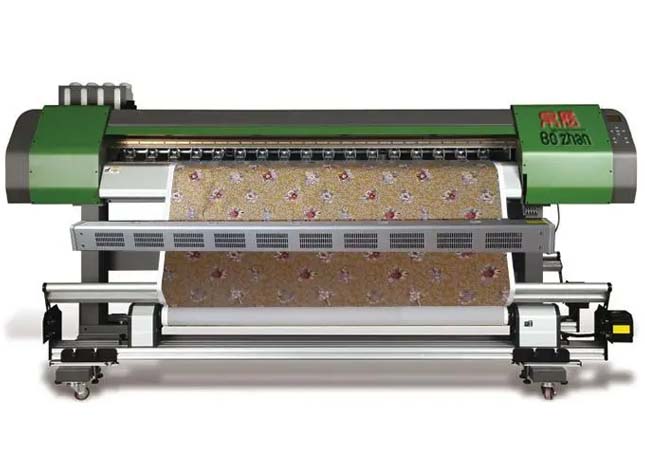When it comes to traditional textile dyeing, a series of unpleasant impressions about the inconvenient process by textile cutting machine, flat screen printing machines, rotary screen printing machines, steaming machines, sizing machines, rinsing machines, dryers and other dyeing machinery with pungent smell, noise and sewage in the workshop will take into our mind. However, rapid economic development made the textile industry become an industry with comparative advantages in the global market, and also provided unprecedented opportunities for the development of textile machinery and digital printing technology.

Digital printing is to input the pattern into the computer in digital form, edit and process it through the modern CAD system, then control the micro-piezoelectric inkjet nozzle by the computer to directly spray the special dyeing liquid on the textile to form desired patterns, which not only achieve the special effect of traditional printing, but also achieve special effects that traditional dyeing machines cannot match, entirely changing the traditional printing concept and opening up a new era of fabric printing and dyeing.
Digital Printing System
The digital printing system consists of 2 parts: the computer graphics processing system and the printing system.
The computer processing system has no special requirements, it can run under both Windows95 and Windows98 systems without any special requirement for the printed graphics, which means all kinds of graphics can be reproduced, achieving a realistic printing effect by it. While the printing system needs special printing machinery and pre-finish and after-finish operations on printed fabrics. The dyes used in printing commonly are red, yellow, blue and black, with each color having both dark and light versions, total 8 colors. The pre-finish of grey fabrics needs to be operated on a specific fabric machine, then the selected pattern can be printed on operated grey fabric directly and quickly after the graphics are processed into computer system. It is the same as the printing process on ordinary paper.
Digital Printing & Traditional Printing
Although both of them can be called printing, digital printing is already a totally different concept in terms of printing effects and printed fabric products. For example, there are numerous difficulties with printing over 10 sets of colors and printing fine and patterns in the traditional printing process. However, digital printing is not limited by the number of colors, it can print almost all colors in nature, altogether about 1000-2000000 colors, which is incomparable with traditional printing technology. Digital printing also has distinct advantages in personalized production, fast and easy operation.
Advantages of Digital Printing
1. High Production Efficiency & Low Production Cost
Digital printing technology greatly reduces the original production
and processing steps of color separation drawing, filming and mesh-creating in tradition printing and dyeing production, which significantly reduces the production time and cost of fabric printing. According to related statistics, the general proofing time of digital printing will not exceed 1 business day, while the traditional proofing cycle generally needs 7 business days. Under the market competition rule that time is money and efficiency is life, the cost of proofing is considerably reduced due to the simplification of the process, which undoubtedly brings additional market opportunities to enterprises.
2. No Restriction of Color Process & Color Reversion
Digital printing technology makes its products break through the limitations of color process and color reversion, making fabrics achieve top-grade printing effects, especially in the production of gradient color fabrics, fine cloud textures pattern and other high-precision patterns.
Digital printing has unparalleled advantages in technology. The traditional printing patterns are frequently limited by the length of pattern color reversion while the concept of “color reversion” may not exist in the process of digital printing, which considerably expands the space for textile pattern design and improves the grade of printed products.
Digital printing technology can rapidly alter the traditional design concept and mode, having a revolutionary promotion on the concept and method of clothing consumption, thus starting a new market of "digital clothing". It is possible to print various high-definition patterns, so that small batches of patterns similar to famous Chinese and foreign paintings and photographic works can be printed on textiles, approaching high-end printing effects, which expands the field of textile printing products considerably and improves products quality.




